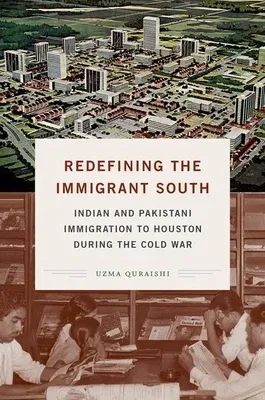Uzma Quraishi
(Author)Redefining the Immigrant South: Indian and Pakistani Immigration to Houston during the Cold WarPaperback, 18 May 2020

Qty
1
Turbo
Ships in 2 - 3 days
In Stock
Free Delivery
Cash on Delivery
15 Days
Free Returns
Secure Checkout
Part of Series
New Directions in Southern Studies
Print Length
336 pages
Language
English
Publisher
University of North Carolina Press
Date Published
18 May 2020
ISBN-10
1469655195
ISBN-13
9781469655192
Description
Product Details
Author:
Book Format:
Paperback
Country of Origin:
US
Date Published:
18 May 2020
Dimensions:
23.39 x
15.6 x
1.91 cm
ISBN-10:
1469655195
ISBN-13:
9781469655192
Language:
English
Location:
Chapel Hill
Pages:
336
Publisher:
Weight:
512.56 gm

